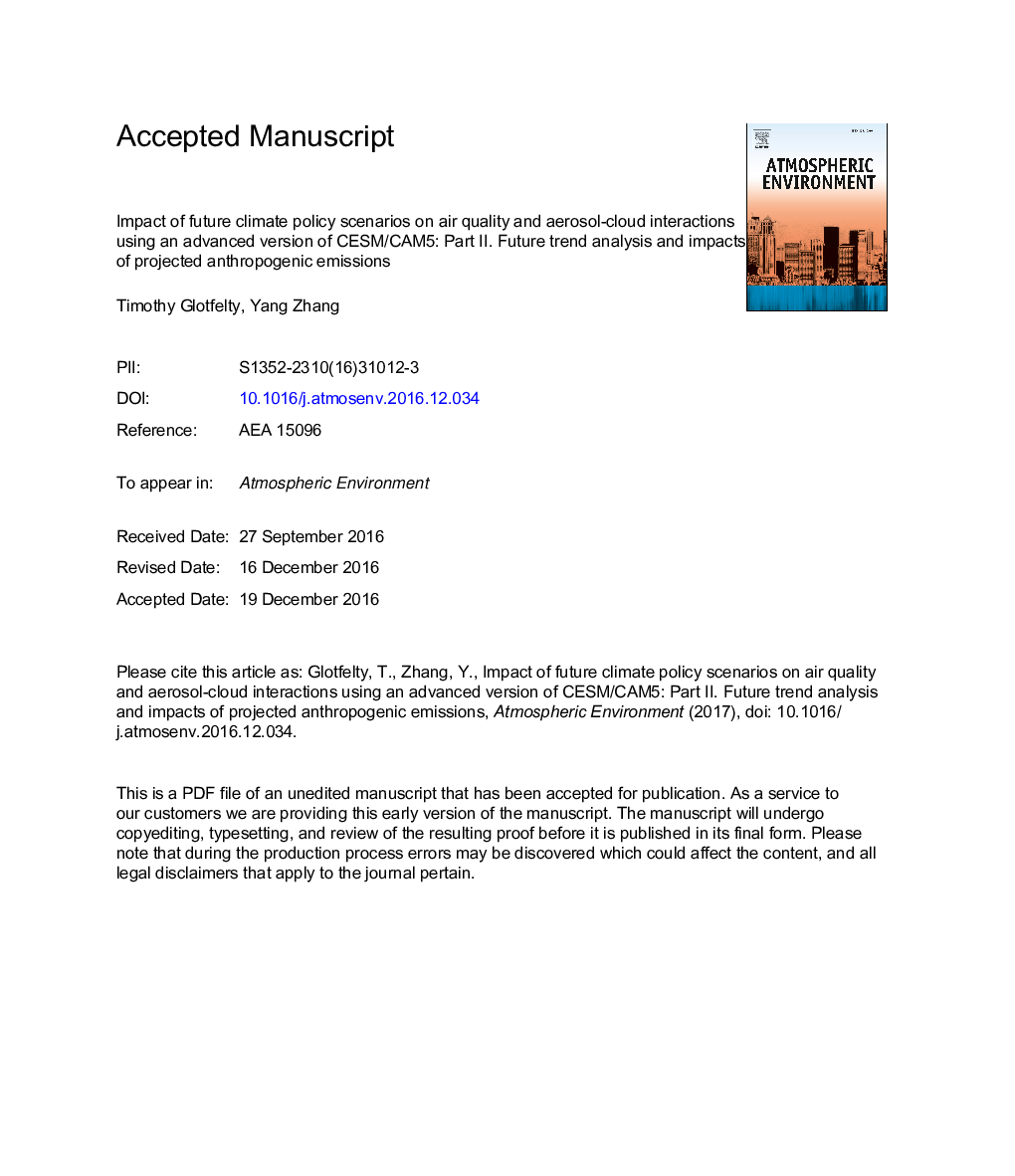| کد مقاله | کد نشریه | سال انتشار | مقاله انگلیسی | نسخه تمام متن |
|---|---|---|---|---|
| 5753425 | 1620322 | 2017 | 64 صفحه PDF | دانلود رایگان |
عنوان انگلیسی مقاله ISI
Impact of future climate policy scenarios on air quality and aerosol-cloud interactions using an advanced version of CESM/CAM5: Part II. Future trend analysis and impacts of projected anthropogenic emissions
دانلود مقاله + سفارش ترجمه
دانلود مقاله ISI انگلیسی
رایگان برای ایرانیان
کلمات کلیدی
موضوعات مرتبط
مهندسی و علوم پایه
علوم زمین و سیارات
علم هواشناسی
پیش نمایش صفحه اول مقاله

چکیده انگلیسی
Following a comprehensive evaluation of the Community Earth System Model modified at the North Carolina State University (CESM-NCSU), Part II describes the projected changes in the future state of the atmosphere under the representative concentration partway scenarios (RCP4.5 and 8.5) by 2100 for the 2050 time frame and examine the impact of climate change on future air quality under both scenarios, and the impact of projected emission changes under the RCP4.5 scenario on future climate through aerosol direct and indirect effects. Both the RCP4.5 and RCP8.5 simulations predict similar changes in air quality by the 2050 period due to declining emissions under both scenarios. The largest differences occur in O3, which decreases by global mean of 1.4 ppb under RCP4.5 but increases by global mean of 2.3 ppb under RCP8.5 due to differences in methane levels, and PM10, which decreases by global mean of 1.2 μg mâ3 under RCP4.5 and increases by global mean of 0.2 μg mâ3 under RCP8.5 due to differences in dust and sea-salt emissions under both scenarios. Enhancements in cloud formation in the Arctic and Southern Ocean and increases of aerosol optical depth (AOD) in central Africa and South Asia dominate the change in surface radiation in both scenarios, leading to global average dimming of 1.1 W mâ2 and 2.0 W mâ2 in the RCP4.5 and RCP8.5 scenarios, respectively. Declines in AOD, cloud formation, and cloud optical thickness from reductions of emissions of primary aerosols and aerosol precursors under RCP4.5 result in near surface warming of 0.2 °C from a global average increase of 0.7 W mâ2 in surface downwelling solar radiation. This warming leads to a weakening of the Walker Circulation in the tropics, leading to significant changes in cloud and precipitation that mirror a shift in climate towards the negative phase of the El Nino Southern Oscillation.
ناشر
Database: Elsevier - ScienceDirect (ساینس دایرکت)
Journal: Atmospheric Environment - Volume 152, March 2017, Pages 531-552
Journal: Atmospheric Environment - Volume 152, March 2017, Pages 531-552
نویسندگان
Timothy Glotfelty, Yang Zhang,